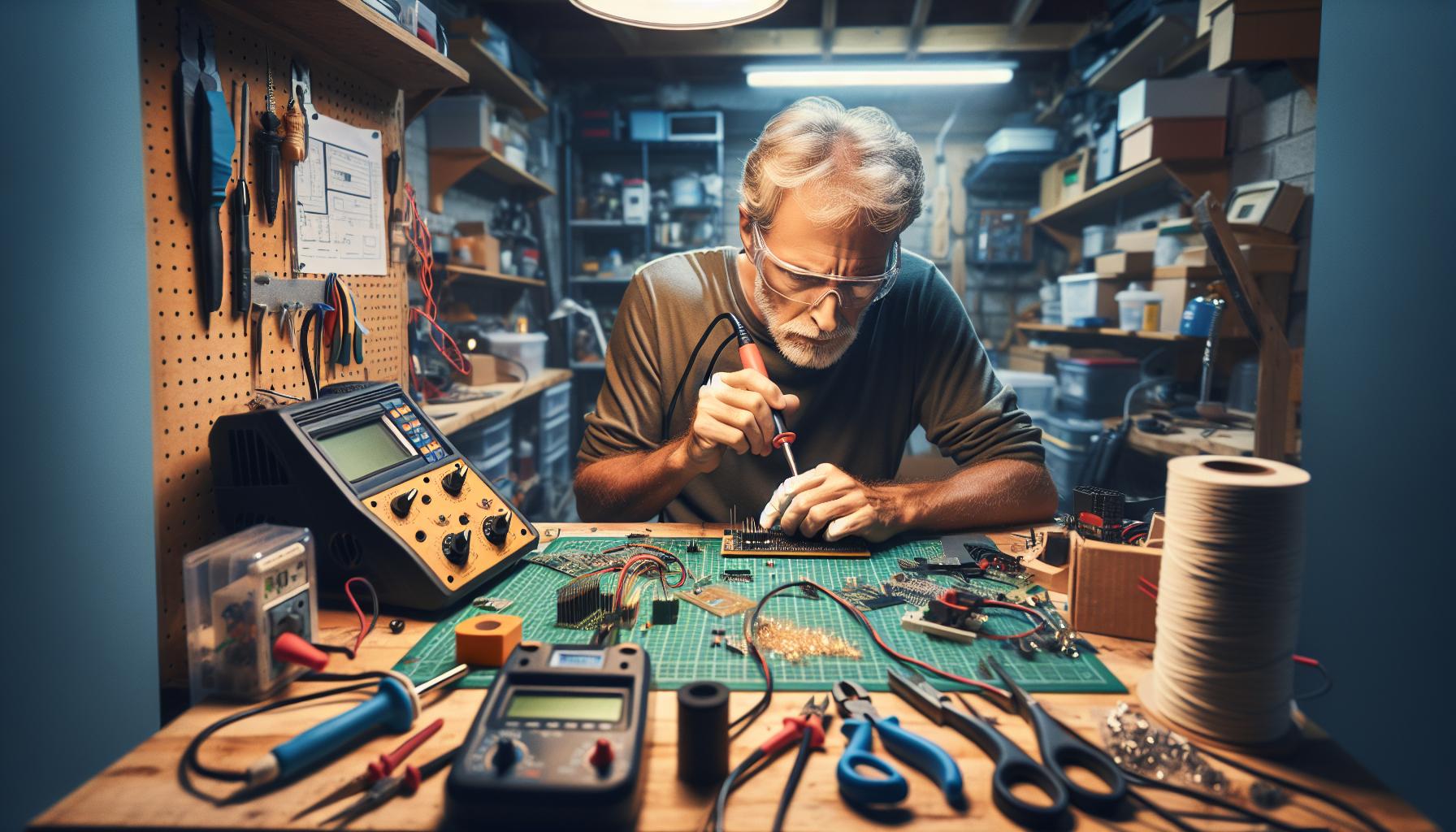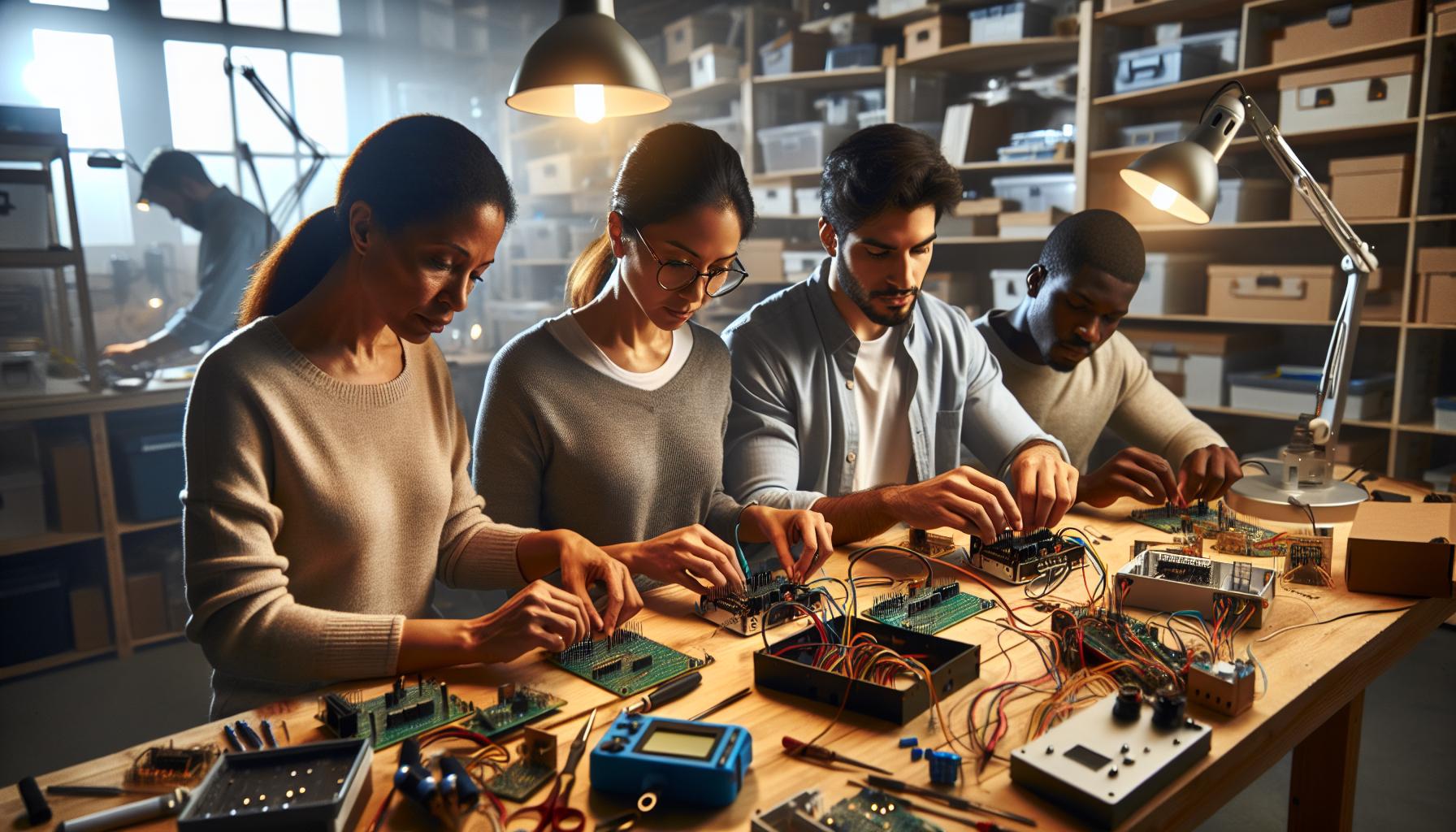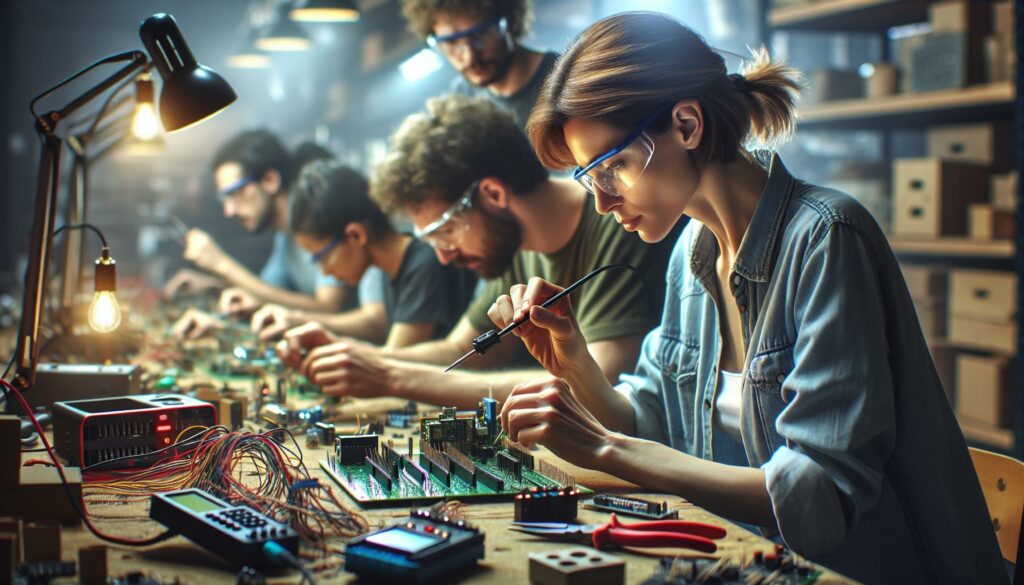Diving into the world of DIY electronic projects for adults can be incredibly rewarding. Whether you’re looking to enhance your skills or simply want to create something unique, these projects offer endless possibilities. I’ve found that working with electronics not only sparks creativity but also provides a satisfying sense of accomplishment.
- Exploring Creativity: DIY electronic projects provide a unique avenue for adults to enhance creativity and acquire hands-on technical skills.
- Essential Tools: Key tools such as soldering irons, multimeters, and breadboards are vital for successful project execution.
- Diverse Project Categories: Projects range from beginner-friendly tasks like LED candles to more complex endeavors such as robotic arms and home automation systems.
- Safety First: Prioritizing safety is crucial, including wearing protective eyewear and working in well-ventilated spaces.
- Problem-Solving Skills: Engaging in troubleshooting enhances critical thinking, as identifying and solving issues is a common aspect of DIY electronic projects for adults.
DIY Electronic Projects for Adults
DIY electronic projects offer a unique opportunity for adults to explore technology hands-on. These projects involve creating or modifying electronic devices, which can include building circuits, programming microcontrollers, or designing gadgets. Engaging in these activities enhances problem-solving skills, boosts technical knowledge, and encourages innovation.
Many adults find satisfaction in taking on projects like designing a smart home system, creating interactive art, or building custom audio equipment. Each project presents its challenges and learning opportunities, helping me improve my understanding of circuitry and coding.
- Arduino Projects: Using Arduino microcontrollers for various applications.
- 3D Printed Gadgets: Combining 3D printing with electronics to create unique devices.
- Wearable Electronics: Integrating technology with clothing or accessories.
- Home Automation: Automating household tasks with smart devices.
- Robotics: Building robots or robotic arms for fun and education.
Each of these categories encompasses numerous specific projects, allowing me to select according to my interests and skill level.
Essential Tools and Materials

Having the right tools and materials simplifies DIY electronic projects. A well-equipped workspace enhances productivity and fosters creativity.
Basic Tools Needed
- Soldering Iron – Essential for joining electronic components. A 30-60 watt soldering iron suits most tasks.
- Wire Strippers – Streamlines the removal of insulation from wires. Manual or automatic options exist based on preference.
- Multimeter – Allows for measuring voltage, current, and resistance. A digital multimeter provides precise readings for troubleshooting.
- Breadboard – Facilitates circuit testing without soldering. Use one with a sufficient number of rows and columns for multiple components.
- Pliers – Beneficial for bending, twisting, and cutting wires. Needle-nose pliers provide better access to tight spaces.
- Screwdriver Set – Necessary for assembling and disassembling devices. A set with various sizes and types, including Phillips and flathead, is useful.
- Hot Glue Gun – Useful for securing components in place. Hot glue is non-conductive and provides a strong bond for electronics.
- Safety Glasses – Important for protecting eyes during soldering and cutting. Prioritize impact-resistant lenses for optimal safety.
- Resistors – Key for controlling current flow. A variety pack ensures availability for different projects.
- Capacitors – Useful for energy storage in circuits. Choose electrolytic and ceramic capacitors for diverse applications.
- LEDs – Great for visual indicators and effects. Stock various colors and sizes for creative projects.
- Microcontrollers – Essential for programming and automation. Arduino and Raspberry Pi are popular choices for versatility.
- Wires and Leads – Necessary for making connections. Utilize solid core wires for breadboards and stranded wires for flexibility.
- Prototyping Boards – Ideal for developing more complex circuits. Opt for boards that match project size and complexity.
- Power Supply – Supplies appropriate power for projects. Consider adjustable power supplies for varied voltage needs.
- Storage Containers – Helps organize components. Use small bins or drawers to keep parts accessible and tidy.
Equipping with these tools and materials simplifies the DIY electronic projects for adults process, ensuring a smoother journey in exploring electronics.
Popular DIY Electronic Projects

Exploring DIY electronic projects offers exciting opportunities for skill enhancement and creativity. Below are categories of projects that suit varying expertise levels.
Beginner-Friendly Projects
- LED Candle: This project involves basic circuit building using a microcontroller. It simulates the flickering of a candle flame.
- Simple Alarm System: Using a motion sensor and a buzzer, create a straightforward alarm. This project introduces concepts of detection and sound activation.
- Light-Activated Switch: Build a switch that turns on devices when it detects light. This project offers practical experience with photoresistors.
- DIY Flashlight: Assemble a simple flashlight with LEDs and a power source. This project teaches circuit assembly and battery management.
Intermediate Projects
- Weather Station: Create a station that monitors temperature and humidity using sensors and displays data on an LCD screen. This project integrates sensor programming and data visualization.
- RGB LED Mood Light: Design a color-changing LED light strip controlled by a microcontroller. This project enhances programming skills and encourages creativity with color manipulation.
- Bluetooth Speaker: Build a portable speaker that connects to smartphones via Bluetooth. This project involves audio amplification and Bluetooth module integration.
- Smart Plant Watering System: Automate plant care with moisture sensors and a water pump. This project provides insights into automation and environmental monitoring.
- Home Automation System: Develop a system to control household appliances remotely using a smartphone app. This project encompasses coding, network communication, and electronics integration.
- Robotic Arm: Design and build a robotic arm that can be programmed to perform tasks. This project enhances understanding of motors, servos, and robotics programming.
- Self-Balancing Robot: Create a robot that maintains balance using sensors and motors. This project challenges skills in control theory and complex electronic systems.
- 3D-Printed Drone: Combine 3D printing technology with electronics to build a functional drone. This project allows for hands-on learning in both design and assembly.
These projects promote practical experience and enhance my understanding of electronic principles, making DIY electronics both fun and educational.
Tips for Successful DIY Electronics

Engaging in DIY electronics projects requires attention to detail and careful planning. Following these tips can enhance the experience and outcomes of any project.
Safety Precautions
I prioritize safety while working on electronics. Wearing safety glasses protects my eyes from debris. Using a soldering iron requires care; I let it cool completely before handling. I also work in a well-ventilated area to avoid inhaling fumes from solder and other materials. Keeping a fire extinguisher nearby provides peace of mind, especially when working with high-current appliances. Additionally, I unplug devices when assembling or disassembling to prevent electric shock.
Troubleshooting Common Issues
I encounter issues during projects, and understanding common problems helps me find solutions quicker. If a circuit doesn’t power on, I check the connections first—loose wires or incorrect placements often cause this issue. Testing components with a multimeter allows me to identify faulty parts. If the circuit works but malfunctions, I review the code for erroneous logic or syntax mistakes. I document all modifications to track changes, making it easier to revert if necessary. When projects exceed their intended functionality, I often simplify components to isolate each part’s performance.
Diving into DIY electronic projects for adults has transformed my understanding of technology and creativity. Each project I tackle not only boosts my technical skills but also ignites a passion for innovation. Whether I’m building a simple circuit or programming an advanced gadget, the satisfaction I gain from creating something unique is unmatched.
With the right tools and a willingness to learn, anyone can embark on this rewarding journey. I encourage you to explore the diverse range of projects available and find the ones that excite you the most. Embrace the challenges and enjoy the process. You’ll be amazed at what you can create and how much you’ll grow along the way.

